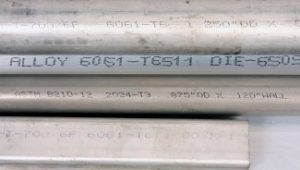Source: AVWeb
Here’s a great article by Bob Hadley at AVWeb that explains the differences between aluminum alloys and how heat treating can make a crucial difference in the final properties.

An excerpt:
“Heat treatment can dramatically alter the working characteristics of an alloy. 6061 is a great example. In the non-heat-treated state (6061-TO), it is quite bendable. But it is so soft, if you try to machine it, it will gum up the gullets of your saw and clog the flutes of your drill bits and end mills. It’s like trying to drill taffy. But when heat-treated to T4 or higher (such as 6061-T6 or 6061-T651…T651 being T6 temper plus stress-relived), it responds fine to any machining operation.”
Plus more, including
- the range of temper/heat-treat designations denoting the specific process used to treat the material
- the higher the number of alloy doesn’t necessarily indicate a stronger and harder alloy
- which aluminum stock ought to be considered “mystery” material
Whether the OEM manufactures truck frames, aircraft components, or soda cans, applying the right heat treatment process to the right alloy produces the just the right weldability, machinability, and bendability.
Read more: “Home Shop Machinist: Material Matters—Aluminum”
Photo credit: Ichudov – Own work, CC BY-SA 3.0





